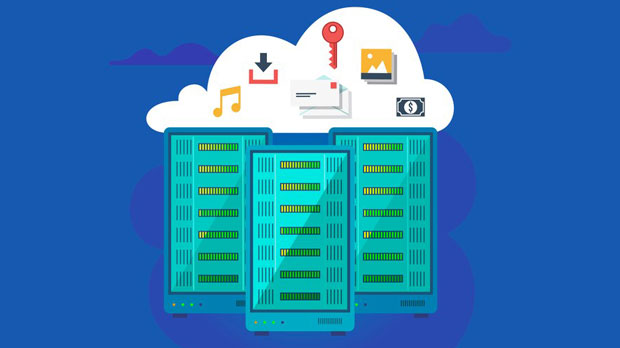When it comes to choosing between private Socks5 and HTTPS proxies for long-term projects, it's important to understand the different attributes of each and how they align with the specific requirements of such projects. Both types of proxies have their own advantages and limitations, and understanding these differences is crucial for making an informed decision. In this article, we will delve deep into the characteristics of private Socks5 and HTTPS proxies, their respective use cases, security implications, performance factors, and how each proxy type can benefit long-term projects. Understanding Private sock s5 proxiesSocks5 proxies are a type of proxy server that routes internet traffic without modifying or inspecting the content of the data being transmitted. The "Socks" in the name stands for "Socket Secure," and Socks5 is the fifth and most advanced version of this protocol. One of the primary benefits of Socks5 proxies is their ability to handle any type of internet traffic, whether it’s for HTTP, HTTPS, or even non-HTTP protocols like FTP, SMTP, and others.Socks5 proxies offer a higher level of anonymity compared to other proxy types, such as HTTP proxies. This is because they don’t alter the headers or modify the transmitted data. They simply create a tunnel for the traffic to pass through. For long-term projects, especially those involving sensitive data, Socks5 proxies provide a reliable means of maintaining privacy and anonymity.Another advantage of Socks5 is its ability to support both IPv4 and IPv6 addresses, making it suitable for a wide range of applications and configurations. This flexibility is particularly important for long-term projects that may need to scale or adapt over time. Furthermore, Socks5 proxies do not require any special authentication, which simplifies their setup and use in comparison to other proxies that may require login credentials or other configurations.Understanding HTTPS ProxiesHTTPS proxies, on the other hand, are specifically designed for handling secure web traffic, particularly HTTPS requests. These proxies sit between the user and the web server, intercepting and forwarding requests over a secure HTTPS connection. HTTPS proxies are commonly used for browsing the web anonymously, accessing geo-blocked content, or bypassing censorship.One of the main strengths of HTTPS proxies is their ability to ensure encryption for data transmitted between the client and the proxy server. This adds an extra layer of security, making HTTPS proxies ideal for protecting sensitive information during transmission. HTTPS proxies are particularly beneficial for long-term projects that involve activities like web scraping, e-commerce, or accessing encrypted data, as they can ensure that communications remain secure throughout the process.However, HTTPS proxies are generally more specialized than Socks5 proxies. While Socks5 proxies can handle various types of internet traffic, HTTPS proxies are specifically tailored for HTTP and HTTPS protocols. This limitation means that HTTPS proxies may not be as versatile for projects that require support for non-HTTP protocols.Security ConsiderationsWhen selecting between private Socks5 and HTTPS proxies for long-term projects, security is one of the most critical factors to consider. Both proxy types offer varying levels of security, depending on the implementation and how they are used.Socks5 proxies are often considered more secure in terms of anonymity. Since they do not modify or inspect the content of the traffic, they do not leave identifiable footprints behind. However, they do not encrypt the traffic, which can leave data exposed if the proxy server is not properly configured. For projects that require absolute privacy and minimal data tracking, a well-configured socks5 proxy may be the better option.On the other hand, HTTPS proxies provide built-in encryption, ensuring that the data transmitted between the client and the server is secure. This is a significant advantage for long-term projects that involve transmitting sensitive information, such as passwords, personal data, or payment details. HTTPS proxies mitigate the risks of man-in-the-middle attacks, which are a common threat to unencrypted data. However, HTTPS proxies may not provide the same level of anonymity as Socks5 proxies, since they work primarily with HTTP and HTTPS traffic, which can be more easily traced.Performance FactorsPerformance is another crucial aspect when considering which proxy is more suitable for long-term projects. The efficiency and speed of a proxy can significantly impact the overall performance of the project, especially if it involves high traffic volumes or requires fast data retrieval.Socks5 proxies generally offer better performance in terms of speed and stability. Since they don’t encrypt or decrypt the data, they can handle traffic more efficiently, resulting in lower latency and faster response times. This makes Socks5 proxies ideal for applications that require high throughput, such as streaming, gaming, or large-scale data transfers.In contrast, HTTPS proxies may experience slightly higher latency due to the encryption and decryption processes involved. This additional overhead can result in slower performance compared to Socks5 proxies, especially if the proxy server is under heavy load. However, the security benefits of HTTPS proxies may outweigh the slight performance dip, particularly for projects where security is a higher priority than speed.Use Cases for Long-Term ProjectsBoth private Socks5 and HTTPS proxies can be suitable for long-term projects, depending on the specific use case. Let’s explore some scenarios where each type of proxy might be a better fit:1. Private Socks5 Proxies: - Projects that require handling of multiple protocols (HTTP, FTP, SMTP, etc.). - Long-term data scraping or crawling projects where anonymity is crucial. - Applications that require fast performance and low latency, such as real-time communication or gaming. - Projects that may need to scale or adapt to different traffic types over time.2. HTTPS Proxies: - Web scraping and data collection that require secure, encrypted communications. - E-commerce or financial applications where user privacy and data protection are paramount. - Projects that involve bypassing censorship or accessing geo-restricted content in a secure manner. - Applications that involve handling sensitive user information, such as login credentials or payment details.Conclusion: Choosing the Right Proxy for Long-Term ProjectsBoth private Socks5 and HTTPS proxies have their distinct advantages and are suitable for different types of long-term projects. If anonymity, versatility, and performance are your primary concerns, a private Socks5 proxy may be the better option. On the other hand, if security and encryption are more important for the protection of sensitive data, an HTTPS proxy would be a more fitting choice.Ultimately, the decision depends on the specific requirements of your long-term project. Consider factors such as the type of data you will be transmitting, the protocols you need to support, the level of security required, and the importance of performance. By carefully evaluating these aspects, you can select the most suitable proxy type to ensure the success and security of your long-term project.
Apr 16, 2025
![arrow]()



























































